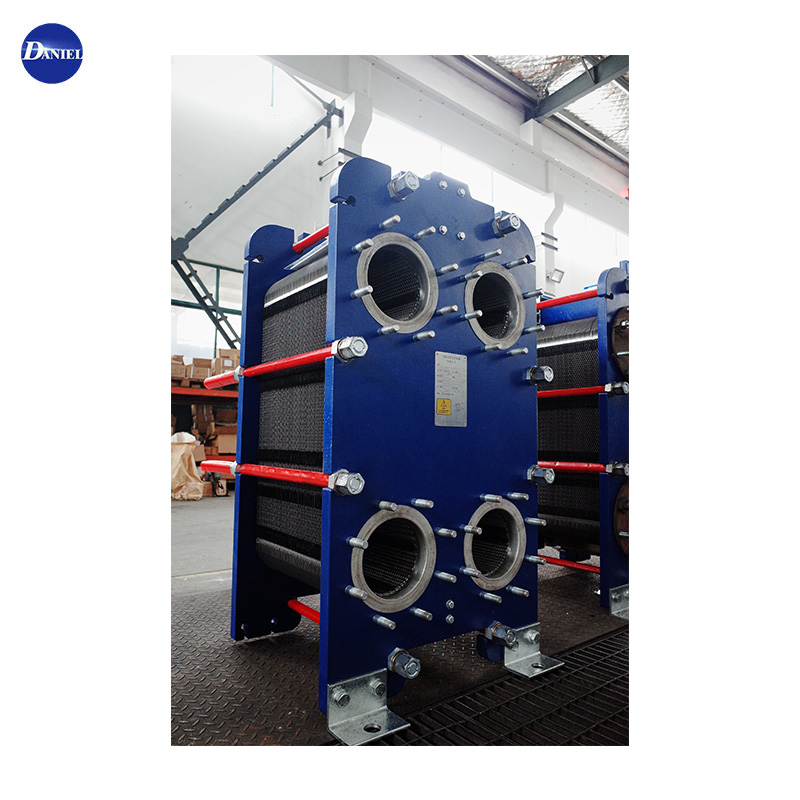Application of Plate Heat Exchangers in Refrigeration
2025-07-07
Plate heat exchangers (PHEs) play a crucial role in modern refrigeration systems due to their high efficiency, compact size, and versatility. They are widely used in both industrial and commercial refrigeration for transferring heat between two fluids without mixing them. The unique design and functionality of plate heat exchangers make them highly suitable for the precise temperature control and energy efficiency required in refrigeration applications.
Working Principle of Plate Heat Exchangers
A plate heat exchanger consists of multiple thin, corrugated metal plates stacked together, forming channels for fluid flow. The fluids flow through alternate channels, allowing heat to transfer from the hot to the cold fluid across the surface of the plates. The large surface area of the plates ensures high heat transfer efficiency, while the compact design saves space.

Key Applications in Refrigeration
Evaporators and Condensers
In refrigeration systems, PHEs are commonly used as evaporators and condensers. As evaporators, they facilitate the absorption of heat from the refrigerated space into the refrigerant. As condensers, they release heat from the refrigerant to another medium such as water or air. Their compact form and effective heat transfer capabilities make them ideal for space-constrained environments.
Heat Recovery
Plate heat exchangers are used to recover waste heat from refrigeration cycles. For example, in supermarkets or industrial refrigeration systems, PHEs can transfer the rejected heat to preheat water for cleaning or heating, thereby improving overall energy efficiency.
Subcoolers and Superheaters
In advanced refrigeration setups, PHEs are used as subcoolers and superheaters to enhance the thermodynamic performance of the system. Subcooling increases refrigeration efficiency, while superheating ensures the complete vaporization of refrigerant before compression.
Chilled Water Systems
In commercial buildings and data centers, PHEs are integral to chilled water systems that provide cooling through air handling units. The exchangers help maintain a stable water temperature, crucial for consistent cooling performance.
Food and Beverage Industry
In the food processing and beverage industry, plate heat exchangers are used for chilling products quickly and safely. Their sanitary design and ease of cleaning meet the hygiene requirements of this sector, while ensuring rapid cooling.
Advantages of Using PHEs in Refrigeration
High Efficiency: The large surface area and turbulence created by the plate patterns result in excellent heat transfer rates.
Compact Design: Their space-saving size is ideal for installations with limited space.
Flexibility: Easily expandable or reconfigurable to meet changing load requirements.
Ease of Maintenance: Simple disassembly allows for easy cleaning and maintenance.
Low Refrigerant Charge: Requires less refrigerant compared to other heat exchangers, contributing to cost savings and environmental benefits.
Conclusion
Plate heat exchangers are indispensable in refrigeration systems due to their efficiency, compactness, and adaptability. From enhancing energy recovery to ensuring precise temperature control, PHEs support sustainable and effective refrigeration solutions across various industries. As the demand for energy-efficient and space-saving cooling technologies grows, the application of plate heat exchangers in refrigeration is expected to expand further.
As a professional manufacturer and supplier, we provide high-quality products. If you are interested in our products or have any questions, please feel free to contact us.


